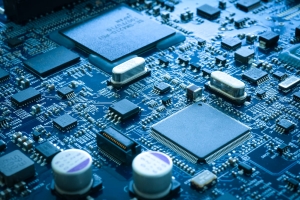The rise of LED screens has revolutionized the way we consume visual content. From small handheld devices to massive displays in stadiums and concert halls, LED screens have become an integral part of our daily lives. This article explores the evolution of LED technology, its various applications, and the advantages it offers over traditional display methods. Additionally, we will delve into the specifics of cinema LED screens and how they enhance the movie-watching experience.
Understanding LED Technology
LED, or Light Emitting Diode, technology has advanced significantly since its inception. Originally, LEDs were used primarily for indicator lights and simple displays. However, innovations in materials and engineering have led to the development of high-definition screens that offer superior image quality, brightness, and energy efficiency.
How LED Screens Work
LED screens consist of numerous tiny diodes that emit light when an electric current passes through them. These diodes are arranged in a matrix, allowing for the display of images and videos. The more diodes used, the higher the resolution of the screen. This technology enables vibrant colors and deeper blacks, enhancing the viewing experience.
Types of LED Screens
LED screens come in various types, each designed for specific applications. Understanding these types is essential for selecting the right screen for a given purpose.
1. Direct View LED Displays
Direct view LED displays are commonly used in outdoor settings. They consist of individual LEDs that can be seen from a distance, making them ideal for billboards and large advertisements. These screens offer high brightness levels, ensuring visibility even in direct sunlight.
2. LED Video Walls
Video walls are formed by combining multiple LED screens to create a larger display. They are often used in control rooms, broadcast studios, and events. The seamless integration of these screens allows for a stunning visual impact and versatility in content display.
3. Fine Pixel Pitch LED Displays
Fine pixel pitch LED displays are designed for indoor use and feature a smaller distance between the diodes. This results in higher resolution images suitable for close viewing. They are commonly used in conference rooms, retail spaces, and exhibitions.
4. Cinema LED Screens
One of the most exciting advancements in LED technology is the development of cinema led screen. These screens provide an immersive experience by delivering vibrant colors and high contrast ratios. They are quickly becoming a preferred choice for movie theaters around the world. For a deeper dive into cinema LED screens, you can visit Cinema LED Screen: All You Need to Know.
Advantages of LED Screens
The popularity of LED screens can be attributed to several key advantages they offer over traditional display technologies.
1. Energy Efficiency
LED screens consume significantly less power than traditional LCD or CRT displays. This energy efficiency not only reduces operational costs but also has a positive impact on the environment.
2. Brightness and Contrast
LED screens provide superior brightness and contrast levels. This means that they can display clear images even in bright environments. The enhanced contrast ratio also contributes to a more vibrant and engaging viewing experience.
3. Longevity
LED technology is known for its durability and longevity. LED screens typically have a lifespan of over 100,000 hours, reducing the need for frequent replacements and maintenance.
4. Thin and Lightweight Design
The compact design of LED screens allows for easy installation in various settings. They can be mounted on walls or integrated into existing structures, making them versatile for different applications.
Applications of LED Screens
LED screens are used in a wide range of industries, showcasing their versatility and adaptability.
1. Advertising and Marketing
In the advertising industry, LED screens play a crucial role in capturing consumer attention. Digital billboards and signage can display dynamic content, making advertisements more engaging.
2. Events and Entertainment
Concerts, festivals, and sports events rely heavily on LED screens to provide visual entertainment. Large video walls enhance the audience experience, ensuring that everyone can see the action clearly.
3. Education and Training
LED screens are increasingly used in educational settings. They provide an interactive platform for teachers and students, enhancing the learning experience through multimedia presentations.
4. Healthcare
In the healthcare sector, LED screens are used for patient monitoring and information display. They provide clear visibility, ensuring that critical information is accessible to medical professionals.
The Future of LED Screens
The future of LED screens looks promising, with ongoing advancements in technology. As demand for high-quality visual experiences grows, manufacturers are focusing on developing screens with even higher resolutions, improved color accuracy, and more energy-efficient designs.
Innovations on the Horizon
MicroLED Technology: MicroLED technology is poised to revolutionize the display industry by offering higher resolution and better color accuracy. This technology utilizes microscopic LEDs to create stunning visuals.
Flexible Displays:
Flexible LED screens are being developed for applications that require curved or bendable displays. This innovation opens up new possibilities for design and functionality.
Smart LED Screens:
With the rise of smart technology, LED screens are becoming more integrated with IoT devices. This allows for dynamic content display and improved interactivity.
Conclusion
LED screens have transformed the way we experience visual content, offering numerous advantages over traditional display technologies. Their versatility and adaptability make them suitable for various applications, from advertising to healthcare. As technology continues to evolve, LED screens will play an increasingly vital role in our daily lives.
For those interested in cinema LED screens, exploring the benefits and innovations in this field can provide valuable insights into the future of movie-watching experiences. Discover more about cinema LED screens at Cinema LED Screen: All You Need to Know.
In summary, the evolution of LED technology has not only enhanced our viewing experiences but has also paved the way for new innovations that will shape the future of displays across multiple industries






